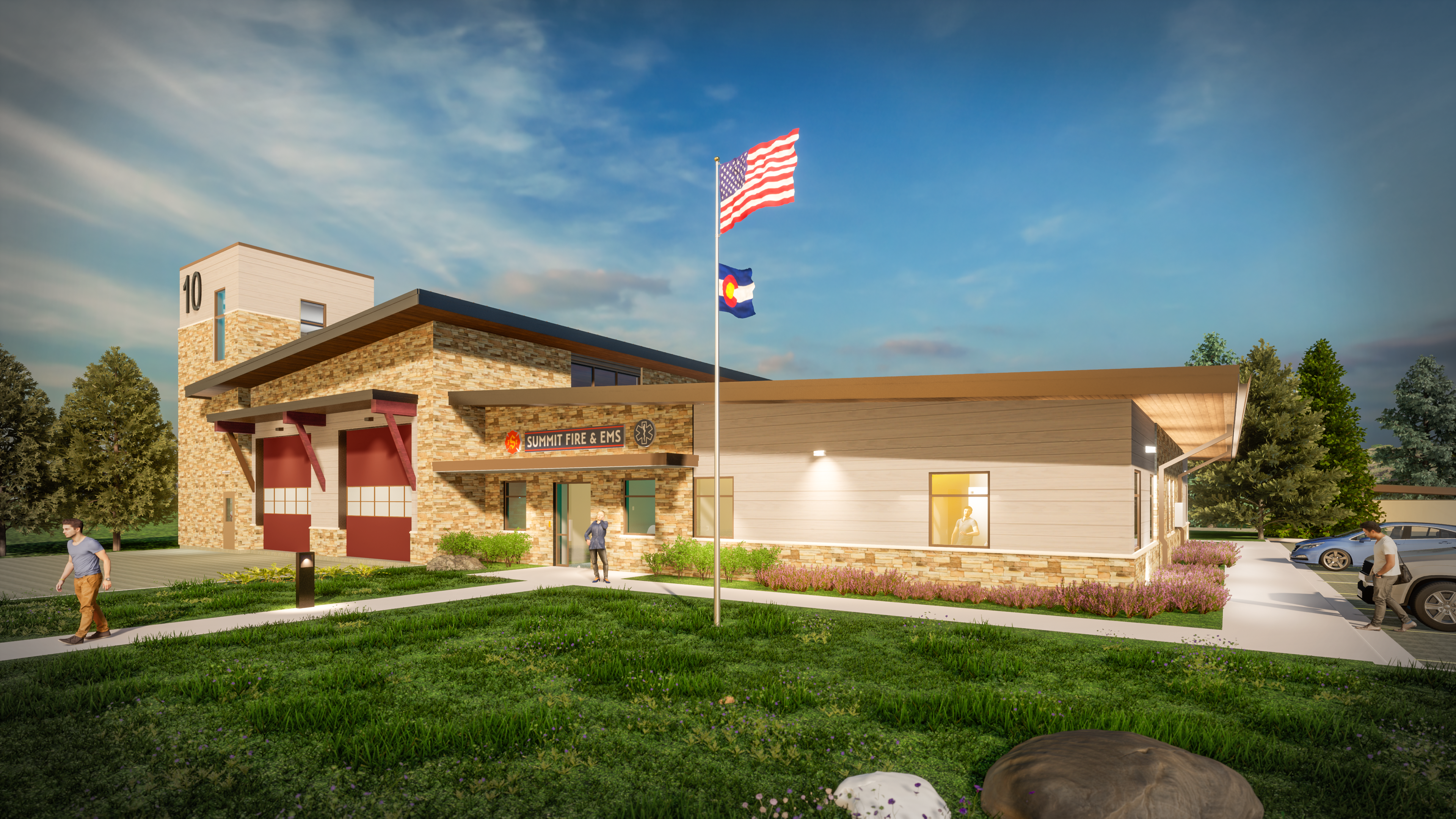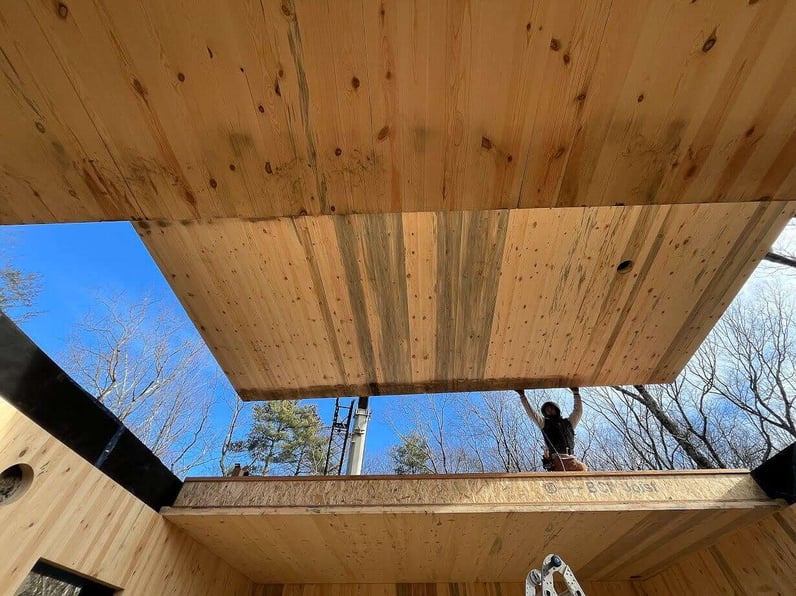The original iteration of this article was published in the Colorado Real Estate Journal.
From the Rockies to the plains, the real estate landscape is evolving quickly.
Staying ahead of industry trends is increasingly vital in today’s sector, but keeping pace can be challenging. Architects Adrian Avilez, Allison Miller, and Chris Sigit-Sidharta discuss five key trends that are driving change and influencing the future of real estate in Colorado and beyond.
Wildfire Resilience
Across the state, wildfires are threatening development. Designing for resilience is essential to mitigate the consequences of natural events and reduce hardships for communities. Local jurisdictions, especially in alpine areas, are adapting planning requirements to enhance fire safety. This includes landscaped buffer zones surrounding structures and enforcing stricter building material standards that are less combustible. For example, property insurance may require exterior cladding materials that are fire resistant. Moreover, water-conservation measures, such as xeriscaping, are instrumental in this effort. Considering what’s at risk, this is a joint effort between various stakeholders aiming to create safer communities.

Modular Construction Methods
For single-family and multi-family residential, modular construction is now considered for most projects to maintain quality while reducing costs. This approach is likely the future of residential construction. Transporting volumetric modular units over long distances with high gas prices, finding design teams and GCs familiar with modular building, traditional financing, and production backlogs may still cause implementation issues. SEH is currently using panelized modular construction on a few residential projects. As more companies emerge that can deliver within a reasonable radius, construction is expected to become increasingly mainstream as an efficient, cost-effective option.

Attainable Housing
Both urban and rural areas are impacted by attainable workforce housing, especially in resort communities. Community land trusts can prove instrumental in addressing this problem, as they are tax exempt non-profits. These trusts ensure long-term affordability by separating land ownership from building ownership and leasing the land back to the community. This model aims to help the workforce build wealth through homeownership, whether it be through condominiums or single-family residences. In the instance of Westside/Triangle Mobile Home Park in Durango, this community banded together to avoid a corporate purchase, known to drastically increase rent. This was achieved through a creative public/private/non-profit partnership, utilizing the land trust model.
Adaptive Reuse
Developers are increasingly turning to adaptive reuse, breathing new life into existing structures to meet housing needs. Converting older motels to studio apartments is a growing trend, but this comes with challenges, including accommodation for Type B dwellings, providing accessible Type A dwellings, sprinkler installation, mitigating asbestos, etc. While dealing with these and other issues may be rigorous, adaptive reuse projects can revitalize urban areas and provide unique residential and commercial spaces, like the repurposing of vacant office buildings. This trajectory aligns with broader efforts to promote environmental responsibility and make efficient use of existing resources.
Shared Parking
Any discussion of real estate trends would be incomplete without mentioning parking. Communities seeking to optimize urban land use are becoming more receptive to shared parking solutions. Aiming to increase density, this establishes a continuous built environment that encourages walkability and minimizes the financial effects of stringent parking requirements. The shared-parking approach optimizes available spaces by opening previously restricted areas, supporting mixed-use developments by catering to different users throughout the day. For example, office parking lots that are empty at night can serve nearby restaurants during evening hours.
The Colorado real estate market is undergoing significant changes, driven by the need for affordability, efficiency, safety, and longevity. Embracing innovative practices and sustainable design will become progressively important to meet future demands and create resilient Colorado communities.
About the Experts
If you’re curious about any of these trends or want to discuss the real estate landscape in your neck of the woods, contact our team.

Adrian Avilez, Assoc. AIA, is a senior project design leader with experience in multi-family residential, senior living, mixed-use, hospitality, office, K-8 education, and government projects at all phases of development. He has an interest in urban studies and advocates creating vibrant cities that are walkable and transit oriented.

Allison Miller, AIA*, is a senior architect who has experience developing plans for a variety of building types, including multi-family residential, commercial, educational, and public safety projects. She is skilled at understanding client goals and the ‘big picture’ concept, while also focusing on the details to achieve the project vision. Allison believes in the benefits of integrated project delivery methods and SEH’s multidisciplinary design approach.
*Registered Architect in CO, NM, UT

Chris Sigit-Sidharta AIA*, LEED AP BD+C, GGP, is a senior architect with extensive experience in design, implementing contract documents, bidding procedures, and construction administration. His design experience includes commercial, municipal, and federal facilities, mixed-use buildings, custom homes, and tenant-improvement projects.
*Registered Architect in CO, ID, NM

.png?width=113&name=SEH_Logo_RGB%20(1).png)
